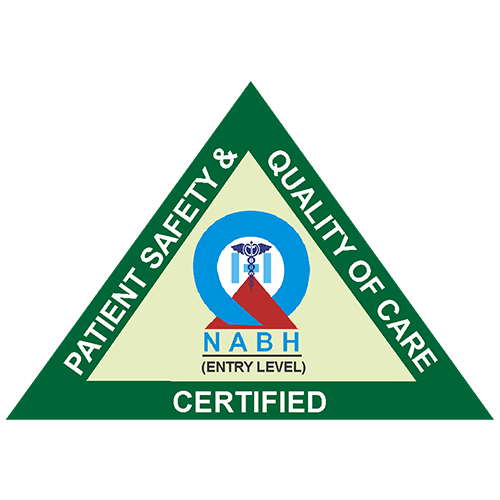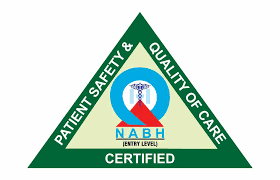Prostate cancer is a type of cancer that develops in the prostate gland, which is a small gland located below the bladder and in front of the rectum in men and people assigned male at birth (AMAB). This gland produces fluid that mixes with semen and helps keep sperm healthy for reproduction. Prostate cancer occurs when the cells in the prostate gland begin to grow uncontrollably and form tumors.
Prostate cancer is a serious disease that can lead to various complications if not treated in a timely manner. However, the good news is that most people with prostate cancer get diagnosed before it spreads beyond their prostate gland. Treatment at this stage often eliminates the cancer. That’s why early detection is crucial in prostate cancer, and regular screenings can help detect the cancer in its early stages when it’s most treatable.
Types of Prostate Cancer
Prostate cancer usually presents as adenocarcinoma. However, there are rare cases where it can develop from other cell types, such as small cell carcinomas, transitional cell carcinomas, neuroendocrine tumours, and sarcomas.
Symptoms of Prostate Cancer
Symptoms of prostate cancer may not be noticeable in the early stages of the disease. However, as the cancer grows, it may cause symptoms such as:
- Frequent urination, especially at night
- Difficulty starting or stopping urination
- Weak or interrupted urine flow
- Pain or burning during urination
- Blood in the urine or semen
- Pain in the back, hips, or pelvis that doesn’t go away
These symptoms can also be caused by other conditions, such as benign prostatic hyperplasia (BPH) or a urinary tract infection. Therefore, it is important to see a doctor if you experience any of these symptoms.
Do Prostate Issues Necessarily Indicate Prostate Cancer?
Prostate problems are common in men, but not all of them are a sign of cancer.
- Benign prostatic hyperplasia (BPH) is a common condition that enlarges the prostate gland but doesn’t increase cancer risk.
- Prostatitis, an inflammation and swelling of the prostate gland, is usually the cause of an enlarged prostate in younger men. It’s important to see a doctor for proper diagnosis and treatment of any prostate issues.
Causes of Prostate Cancer
The exact cause of prostate cancer is not known, but there are certain risk factors that can increase a man’s chances of developing the disease. These risk factors include:
- Age: Prostate cancer is more common in older men.
- Family history: Men with a father, brother, or son who has had prostate cancer are at a higher risk.
- Race: African American men are more likely to develop prostate cancer than men of other races.
- Obesity: Obese men are at a higher risk of developing advanced prostate cancer.
Several prostate cancer risk factors have been discovered in certain studies, however the evidence is conflicting. Other possible risk elements include:
- Smoking.
- Prostatitis.
- BMI above 30 (having obesity).
- Sexually transmissible diseases (STIs).
Diagnosis of Prostate Cancer
Prostate cancer can be detected early through screenings. Screening for prostate cancer typically involves:
- Digital rectal exam – Your doctor feels your prostate gland with a finger that has been greased and gloved. A lump or hard spot could be cancer.
- Prostate-specific antigen (PSA) blood test – The prostate gland produces a protein referred to as protein-specific antigen (PSA). Elevated PSA levels could be a sign of cancer. Moreover, levels increase if you have benign diseases like BPH or prostatitis.
If the results of these screenings show signs of prostate cancer, additional tests or procedures may be required to confirm the diagnosis. The age at which you should start getting screened for prostate cancer depends on your risk factors, but it’s typically recommended to begin at age 55. High-risk individuals, such as those with a family history of prostate cancer, may need to begin screening earlier. Screenings usually stop after age 70, but this decision can be made on a case-by-case basis with your healthcare provider.
Diagnostic Procedures of Prostate Cancer
Once prostate cancer is suspected, further diagnostic procedures may be necessary to confirm the diagnosis and determine the extent and aggressiveness of the cancer. Not all suspected cases require a definitive diagnosis, as sotumoursors may be slow-growing and not require immediate treatment. However, if the cancer is growing quickly or spreading, additional tests are necessary to determine the best course of action.
One common diagnostic procedure is imaging, which can include an MRI or transrectal ultrasound. These tests produce images of the prostate gland, including any suspicious areas that may be cancerous. Imaging results can help providers decide whether a biopsy is necessary.
A biopsy is the only definitive way to diagnose prostate cancer and determine its aggressiveness. During a biopsy, a healthcare provider uses a needle to remove a small tissue sample from the prostate gland. The tissue is then examined in a lab for cancer cells. Genetic testing may also be performed on the biopsied tissue to determine if the cancer has any specific characteristics, such as mutations, that may affect treatment options.
It’s important to note that not all suspected cases of prostate cancer require a biopsy. Doctors may use a combination of factors, including a patient’s age, overall health, and the results of imaging and screening tests, to determine the appropriate diagnostic procedures.
Prostate Cancer Management and Treatment
Prostate cancer treatment and management depend on various factors, including the overall health of the patient, whether the cancer has spread, and how fast it is spreading. In most cases, prostate cancer diagnosed in the early stages can be cured with treatment. Depending on the type and stage of cancer, patients may work with different healthcare providers, such as urologists, radiation oncologists, and medical oncologists.
- Surveillance
One option for managing prostate cancer is surveillance, also known as watchful waiting or active surveillance. If the cancer is growing slowly and not spreading, healthcare providers may monitor the patient’s condition instead of providing immediate treatment.
- Active surveillance involves regular screenings, scans, and biopsies every one to three years to monitor the growth of the cancer. This approach is most effective for patients whose cancer grows slowly, is confined to the prostate gland, and isn’t causing symptoms. If the condition worsens, healthcare providers may initiate treatments.
- Watchful waiting is similar to active surveillance but is more commonly used for patients who are frailer and have cancer that is unlikely to go away with treatment. Testing is less frequent, and instead of eliminating the tumor, treatments focus on managing symptoms.
Other treatment options for prostate cancer may include surgery, radiation therapy, hormone therapy, or chemotherapy. In some cases, a combination of these treatments may be necessary. The healthcare provider will determine the most suitable treatment based on the patient’s condition and the stage of the cancer.
- Surgery
Surgery is a common treatment option for prostate cancer, particularly for cancers that haven’t spread beyond the prostate gland. One of the most common surgical procedures is a radical prostatectomy, which involves removing the diseased prostate gland. There are two main types of radical prostatectomy: open and robotic.
- During an open radical prostatectomy, a healthcare provider makes a single incision into the patient’s abdomen, running from the belly button to the pubic bone. They then remove the prostate gland through this incision. While this technique is effective, it’s less commonly used than less-invasive methods like robotic prostatectomy.
- Robotic radical prostatectomy is a minimally invasive surgical procedure that allows a healthcare provider to remove the prostate gland through several small incisions. The surgeon operates a robotic system via a console, which provides a high-resolution, three-dimensional view of the surgical site. This allows for precise removal of the prostate gland while minimizing damage to surrounding tissues.
3. Radiation Therapy
Radiation therapy is another option for treating prostate cancer. This treatment uses high-energy X-rays or other types of radiation to kill cancer cells. External beam radiation therapy (EBRT) delivers radiation from a machine outside your body directly to the cancer. Brachytherapy involves placing small radioactive seeds into your prostate gland.
- Systemic Therapy
Systemic therapies are recommended if the cancer has spread outside your prostate gland. Hormone therapy uses medications to prevent testosterone from reaching cancer cells or by reducing your testosterone levels. Chemotherapy uses medicines to destroy cancer cells. Immunotherapy strengthens your immune system to help your body fight cancer cells. Targeted therapy focuses on the genetic changes that turn healthy cells into cancer cells.
- Focal therapy
Focal therapy is a newer form of treatment that destroys tumors inside the prostate gland. High-intensity focused ultrasound (HIFU) generates powerful heat to kill cancer cells, while cryotherapy uses cold gases to freeze cancer cells. Laser ablation uses intense heat directed at the tumor to kill cancer cells, while photodynamic therapy makes cancer cells more sensitive to certain wavelengths of light, killing the cancer cells.
If you have been diagnosed with prostate cancer, talk with your healthcare provider about your treatment options. They can help you understand the risks and benefits of each approach and work with you to create a personalized treatment plan that meets your individual needs.
Conclusion:
In conclusion, prostate cancer is a common cancer that affects many men. While it cannot be prevented, there are steps you can take to reduce your risk. Regular prostate screenings, maintaining a healthy weight, exercising regularly, and eating a nutritious diet can all help. Quitting smoking is also important for reducing your risk of prostate cancer and many other health issues. By taking care of your overall health and working with your healthcare provider, you can take steps to lower your risk of developing prostate cancer and catch it early if it does occur.




